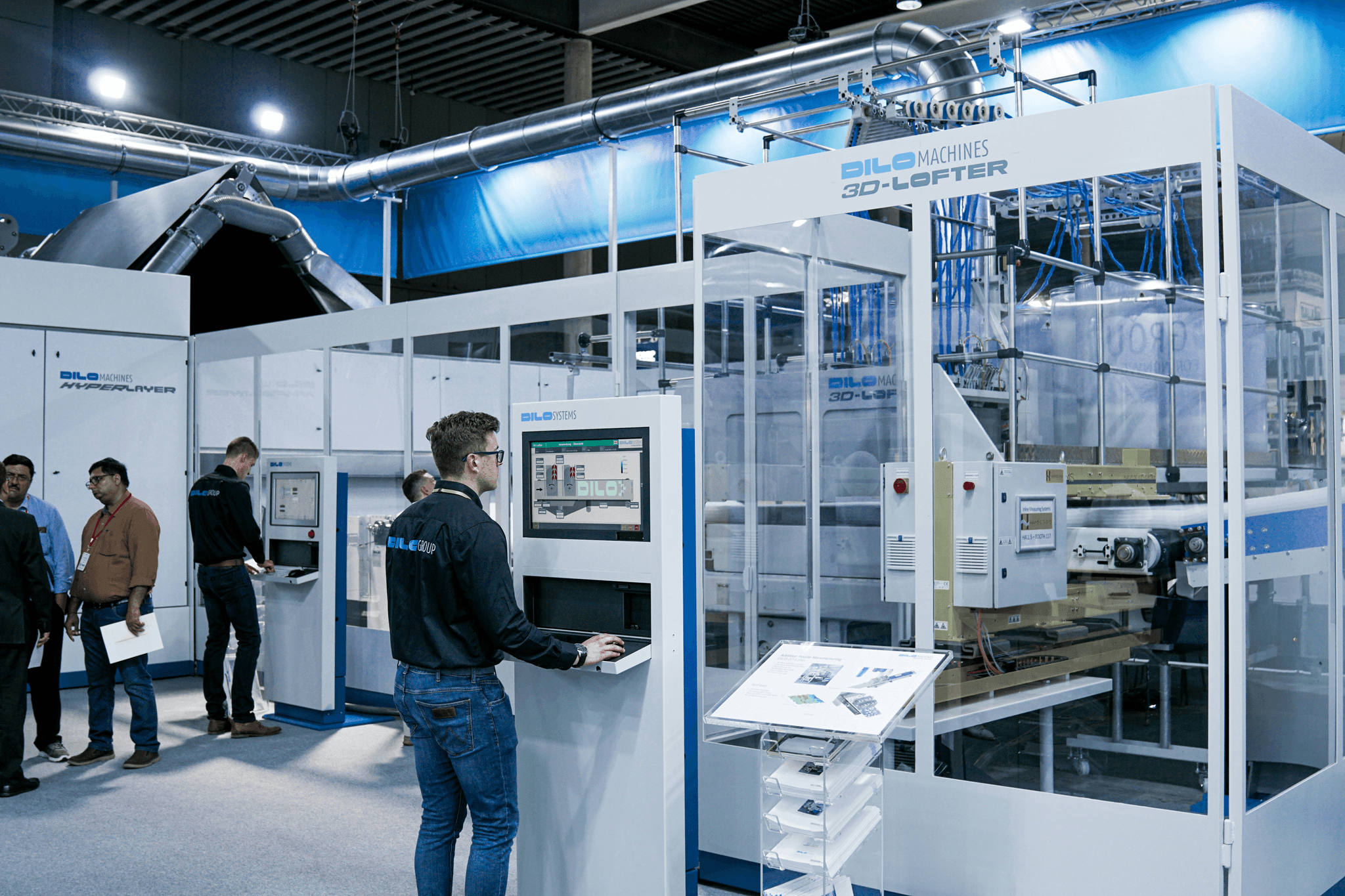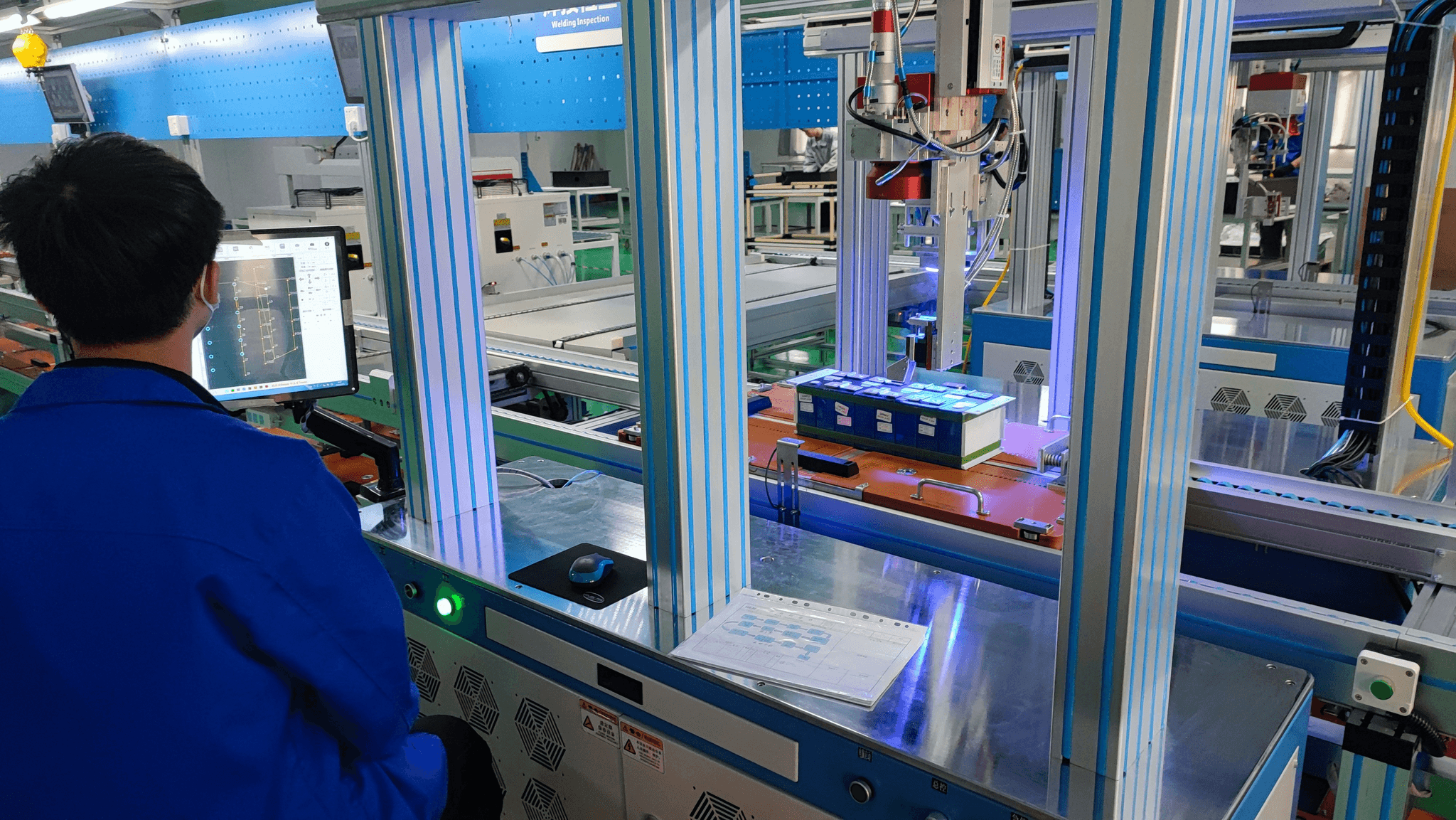Introduction
In the fast-paced world of manufacturing, ensuring that every component meets stringent quality standards is crucial. This is where the Production Part Approval Process (PPAP) comes into play, serving as a cornerstone for quality management systems in the manufacturing industry. By establishing a robust framework for quality checks in manufacturing, PPAP not only enhances product reliability but also fosters trust between manufacturers and their clients.
Understanding PPAP in Manufacturing
The Production Part Approval Process (PPAP) is essentially a structured approach that verifies whether suppliers can deliver products that meet specified requirements consistently. At its core, PPAP meaning revolves around ensuring that all parts produced are of high quality and adhere to design specifications. This process is vital for maintaining effective quality control in manufacturing, enabling companies to identify potential issues before they escalate into costly problems.
Key Components of PPAP
A successful PPAP involves several key components designed to facilitate thorough documentation and verification procedures. These components include design records, engineering change documents, and various forms of testing and inspection results that validate compliance with customer requirements. By focusing on these elements within the context of a quality management system in the manufacturing industry, organizations can ensure comprehensive quality checks in manufacturing processes.
The Role of Quality Control in PPAP
Quality control plays an integral role within the framework of PPAP by providing systematic methods to assess product integrity at every stage of production. It ensures that all aspects of the Production Part Approval Process are executed flawlessly, thereby minimizing defects and enhancing overall product performance. In essence, effective quality control in the manufacturing industry not only safeguards product quality but also reinforces customer confidence in the manufacturer’s commitment to excellence.
What is PPAP?

In the realm of manufacturing, understanding the Production Part Approval Process (PPAP) is crucial for ensuring that products meet quality standards before they hit the market. This structured approach serves as a bridge between design and manufacturing, helping to guarantee that every part produced aligns with customer specifications. Essentially, PPAP acts as a safeguard, ensuring that quality control measures are in place and functioning effectively throughout the manufacturing process.
Definition and Purpose of PPAP
The Production Part Approval Process (PPAP) is defined as a standardized procedure used to demonstrate that a supplier can produce parts consistently meeting all customer requirements during an actual production run. The primary purpose of PPAP is to provide evidence that quality checks in manufacturing are not just theoretical but practically applied and verified. By implementing this process, manufacturers can assure stakeholders that their quality management system in the manufacturing industry meets rigorous standards.
Historical Overview of Production Part Approval Process
The roots of the Production Part Approval Process trace back to the automotive industry in the 1980s when companies sought methods to enhance product reliability and safety. Over time, PPAP evolved into a critical component of quality control in manufacturing practices across various industries, not just automotive. Today, it stands as an essential framework within which manufacturers can align their operations with customer expectations while adhering to international quality standards.
Importance of PPAP in Quality Management
The importance of PPAP within quality management cannot be overstated; it plays an integral role in minimizing risks associated with product failures and non-compliance issues. By using this systematic approach, manufacturers ensure thorough documentation and validation at each stage of production, fostering trust between suppliers and customers alike. Furthermore, integrating PPAP into a broader quality management system in the manufacturing industry enhances overall efficiency while reinforcing the commitment to delivering high-quality products.
The Steps Involved in PPAP

Navigating the Production Part Approval Process (PPAP) can feel like embarking on a treasure hunt, where each step brings you closer to ensuring quality control in manufacturing. This process is designed to verify that suppliers meet the necessary standards before mass production begins, ultimately safeguarding quality management systems in the manufacturing industry. Let's dive into the essential steps involved in making PPAP work effectively.
Overview of the PPAP Process
The PPAP process consists of several key stages that guide manufacturers through quality checks in manufacturing. Initially, it begins with defining requirements and specifications, followed by a thorough review of design and engineering changes if any exist. Each stage serves as a checkpoint, ensuring that all aspects of production align with established quality control in manufacturing industry standards.
Once initial assessments are complete, manufacturers gather necessary documentation to support their claims about product quality and compliance. This phase often involves collaboration between different departments to ensure that everyone is on the same page regarding expectations and deliverables. Finally, after rigorous evaluations and adjustments based on feedback, approval signifies readiness for full-scale production.
Essential Documentation for Quality Checks
Documentation is the backbone of the Production Part Approval Process; without it, quality checks would be akin to sailing without a compass—directionless and risky! Essential documents include design records, engineering change documents, process flow charts, and measurement system analysis reports. These pieces not only provide evidence of adherence to specifications but also play a pivotal role in supporting continuous improvement efforts within quality management systems.
In addition to these primary documents, manufacturers must also prepare samples for testing and validation against predetermined criteria. This step ensures that every aspect meets or exceeds customer expectations—a fundamental principle behind effective quality control in manufacturing practices. Regular audits and updates of this documentation keep processes transparent and accountable.
Common Challenges in the PPAP Process
Despite its structured approach, navigating through PPAP can present challenges that may trip up even seasoned professionals—think of it as trying to juggle while riding a unicycle! One common hurdle is miscommunication between teams regarding requirements or changes during production phases; this can lead to delays or incorrect submissions during approval stages. Such misunderstandings can undermine trust between suppliers and manufacturers if not addressed promptly.
Another challenge lies in maintaining consistency across various documentation formats or standards used by different stakeholders within the supply chain; inconsistency can lead to confusion during audits or inspections related to quality checks in manufacturing processes. Additionally, adapting quickly when unexpected issues arise requires agility—a trait that's essential yet often overlooked amidst rigid procedures inherent within many organizations' approaches toward APQP meaning (Advanced Product Quality Planning).
As we explore these steps further into successful implementation strategies later on, it's crucial for manufacturers to recognize potential pitfalls early on so they can navigate them effectively while maintaining high-quality outputs throughout their operations.
PPAP and Quality Control in Manufacturing

The Production Part Approval Process (PPAP) plays a pivotal role in enhancing quality control within the manufacturing industry. By establishing a structured framework for validating that production parts meet specified requirements, PPAP ensures that quality checks in manufacturing are not just an afterthought but an integral part of the production lifecycle. This process significantly reduces the risk of defects, thereby bolstering overall quality management systems across various sectors.
The Impact of PPAP on Quality Control
PPAP's influence on quality control is profound, as it lays down stringent guidelines for manufacturers to follow. With its emphasis on rigorous documentation and validation, the Production Part Approval Process helps ensure that every component produced meets industry standards and customer expectations. Consequently, this leads to fewer recalls and rework instances, ultimately saving time and resources while enhancing product reliability.
Moreover, effective implementation of PPAP fosters a culture of continuous improvement within organizations. By regularly assessing processes through established quality checks in manufacturing, companies can identify areas needing enhancement or adjustment. This proactive approach not only strengthens quality control measures but also aligns with broader objectives of operational excellence within the manufacturing industry.
Integrating PPAP with Quality Control Systems
Integrating PPAP into existing quality control systems is crucial for maximizing efficiency and effectiveness in manufacturing processes. This integration allows manufacturers to seamlessly incorporate the principles of the Production Part Approval Process into their daily operations without disrupting workflow continuity. By aligning these two elements, businesses can create a robust framework that supports consistent product quality while minimizing risks associated with non-compliance.
Furthermore, leveraging technology can significantly enhance this integration process. Modern software solutions enable real-time monitoring of production data against established benchmarks set forth by both PPAP and other quality management standards like APQP meaning (Advanced Product Quality Planning). As such, manufacturers can swiftly identify deviations from expected performance levels and take corrective actions promptly.
Real-world Examples of PPAP in Action
Numerous industries have successfully implemented the Production Part Approval Process to bolster their quality control initiatives. For instance, automotive manufacturers often rely heavily on PPAP to ensure that every component—from engine parts to safety features—meets stringent safety regulations before reaching consumers’ hands. Such rigorous adherence not only enhances product integrity but also builds trust between manufacturers and end-users.
In another example, electronics companies utilize PPAP as part of their comprehensive quality management system in the manufacturing industry to guarantee that components like circuit boards undergo thorough inspections before assembly lines commence operation. This meticulous attention to detail minimizes defects and ensures high-quality outputs consistently across various product lines.
These real-world applications underscore how essential it is for organizations committed to excellence in their production processes to adopt practices like PPAP alongside conventional quality control measures in manufacturing industry settings.
The Relationship Between PPAP and APQP
The Production Part Approval Process (PPAP) is intricately linked to Advanced Product Quality Planning (APQP), a framework designed to ensure quality control in manufacturing. Understanding the nuances of APQP is essential for manufacturers looking to enhance their quality management system in the manufacturing industry. By recognizing the relationship between these two processes, companies can streamline their approaches to quality checks in manufacturing.
Understanding APQP Meaning
APQP stands for Advanced Product Quality Planning, a structured method aimed at ensuring that products meet customer requirements and are delivered on time. It provides a comprehensive framework that guides teams through the development process, from concept to production, ensuring that quality control measures are integrated at every stage. By understanding APQP meaning, manufacturers can effectively align their strategies with those of the Production Part Approval Process (PPAP), establishing a solid foundation for successful product launches.
How APQP Supports the Production Part Approval Process
The synergy between APQP and PPAP is evident as APQP lays out the groundwork necessary for effective execution of the Production Part Approval Process. Through its systematic approach, APQP identifies potential risks and establishes preventive measures during product development, which directly supports quality checks in manufacturing environments. When manufacturers embrace both methodologies, they create a robust framework that enhances their overall quality management system in the manufacturing industry.
The Synergy Between Quality Management and PPAP
Integrating PPAP with an effective quality management system fosters a culture of continuous improvement within organizations. The collaborative nature of these processes ensures that all stakeholders are aligned towards achieving excellence in quality control in manufacturing practices. As companies adopt this synergy, they not only enhance their compliance with industry standards but also improve customer satisfaction through consistent delivery of high-quality products.
Best Practices for Successful PPAP Implementation

Implementing a successful Production Part Approval Process (PPAP) requires a strategic approach that emphasizes efficiency and effectiveness. By focusing on best practices, manufacturers can enhance their quality management system in the manufacturing industry and ensure robust quality control in manufacturing. Streamlining processes not only saves time but also improves overall product quality and compliance.
Creating a Streamlined Approval Process
A streamlined approval process is crucial for effective PPAP implementation, as it minimizes delays and enhances communication among stakeholders. This involves clearly defining roles and responsibilities within the team to ensure that everyone understands their part in the production part approval process. By establishing standardized procedures for quality checks in manufacturing, organizations can expedite approvals while maintaining high-quality standards.
To achieve this, manufacturers should utilize checklists and templates that outline necessary documentation required at each stage of the PPAP process. This will help reduce confusion and ensure consistency across different projects. Moreover, regular training sessions can equip team members with the knowledge needed to navigate the complexities of quality control in manufacturing effectively.
Leveraging Technology for Quality Control
In today's digital age, leveraging technology is essential for enhancing quality control in manufacturing processes. Advanced software solutions can automate many aspects of the Production Part Approval Process, from data collection to analysis, making it easier to track compliance with established standards. These tools not only improve accuracy but also provide real-time insights into potential issues before they escalate.
Additionally, utilizing cloud-based platforms allows teams to collaborate seamlessly across different locations while accessing critical information instantly. By integrating technology into their quality management system in the manufacturing industry, businesses can significantly reduce manual errors associated with traditional methods. Ultimately, this leads to more reliable outcomes during quality checks in manufacturing.
China Inspection Pro’s Role in Ensuring Compliance
China Inspection Pro plays a vital role in ensuring compliance throughout the PPAP journey by providing expert guidance and support tailored to manufacturers' needs. Their extensive experience helps businesses navigate complex regulatory requirements while implementing best practices related to production part approval processes effectively. By partnering with such professionals, companies can bolster their efforts toward achieving optimal quality control in manufacturing.
Moreover, China Inspection Pro offers comprehensive inspection services that align with international standards, ensuring products meet both customer expectations and regulatory mandates consistently. Their involvement not only streamlines PPAP implementation but also enhances overall confidence within supply chains regarding product integrity and reliability during production phases. As such, leveraging their expertise becomes a strategic advantage for manufacturers aiming to maintain high-quality benchmarks throughout their operations.
Conclusion

In the ever-evolving landscape of manufacturing, the Production Part Approval Process (PPAP) stands out as a critical component for ensuring quality control. Manufacturers who embrace PPAP not only streamline their approval processes but also enhance their overall quality management systems. The importance of PPAP cannot be overstated; it is a key driver in maintaining compliance and delivering high-quality products to customers.
The Importance of PPAP for Manufacturers
The Production Part Approval Process is essential for manufacturers aiming to achieve consistency and reliability in their products. By implementing PPAP, companies can effectively manage quality checks in manufacturing, ensuring that each part meets specified requirements before mass production begins. This proactive approach minimizes risks associated with defects and fosters trust between manufacturers and their clients.
Moreover, understanding the ppap meaning allows organizations to appreciate its role in risk mitigation throughout the production cycle. Manufacturers that prioritize PPAP are more likely to maintain robust quality control in manufacturing, which ultimately leads to improved customer satisfaction and loyalty. In a competitive market, leveraging the benefits of PPAP can provide a significant advantage over rivals who overlook this crucial process.
Enhancing Quality Management Systems
Integrating PPAP into a company's quality management system in the manufacturing industry is vital for achieving operational excellence. A well-structured approach to the Production Part Approval Process ensures that all necessary documentation and quality checks are conducted thoroughly before product launch. This integration not only streamlines operations but also cultivates a culture of continuous improvement within organizations.
By focusing on enhancing quality management systems through effective use of PPAP, manufacturers can better align their processes with industry standards such as APQP meaning—Advanced Product Quality Planning—which complements the objectives of PPAP. Together, these methodologies create a comprehensive framework that addresses potential issues proactively rather than reactively addressing them after they arise. This synergy leads to more efficient production cycles and higher-quality outputs.
Future Trends in Quality Control in Manufacturing
As technology continues to advance at an unprecedented pace, future trends in quality control in manufacturing will increasingly rely on data-driven insights and automation tools that support the Production Part Approval Process. Innovations such as artificial intelligence (AI) and machine learning will facilitate real-time monitoring of quality checks in manufacturing, allowing for quicker adjustments when deviations occur. This shift toward automation will not only enhance efficiency but also reduce human error during inspections.
Furthermore, embracing digital transformation will empower manufacturers to refine their quality management systems continually while adapting swiftly to changing market demands or regulatory requirements related to product safety and compliance standards. As we look ahead, it’s clear that integrating modern technologies with traditional practices like PPAP will redefine how companies approach quality control in the manufacturing industry—ensuring they remain competitive while delivering exceptional products.
